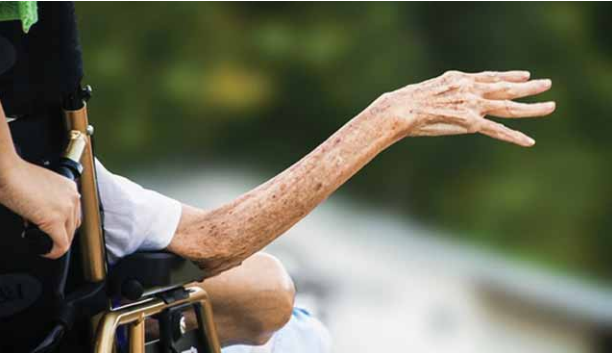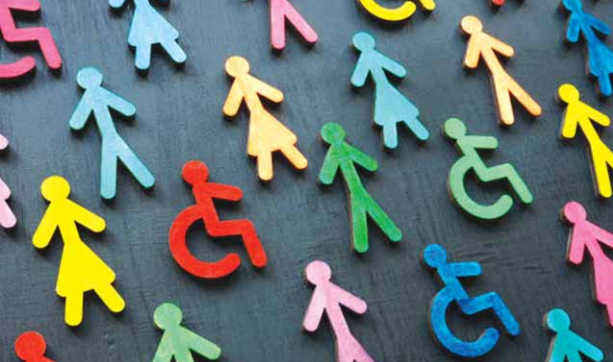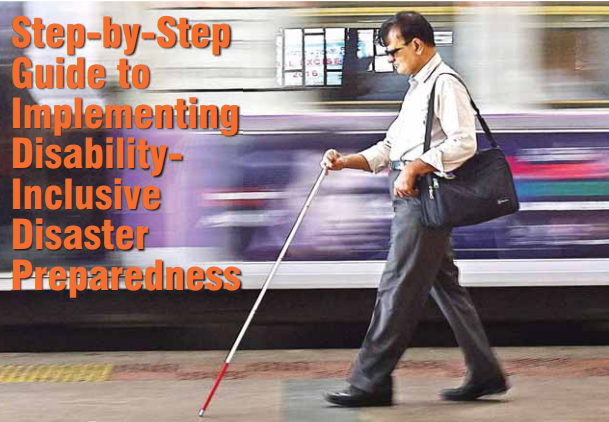In times of disaster, technology can mean the difference between vulnerability and resilience — especially for persons with disabilities. From early warning systems tailored for diverse needs to assistive devices that support safe evacuations, innovators around the world are harnessing technology to bridge critical gaps in disaster preparedness and response.
In India and beyond, these cutting-edge solutions are transforming how we approach inclusive safety. This article dives into the latest advancements, exploring how technology is empowering persons with disabilities to navigate emergencies with greater independence and security. As disasters grow more frequent and unpredictable, it’s clear: inclusive tech isn’t just an option — it’s a lifeline.
Introduction
In June 2023, as Cyclone Biparjoy churned toward Gujarat’s coastline, authorities faced a daunting challenge: evacuating over 100,000 residents, including thousands with disabilities. Amid the chaos, a fleet of GPS-enabled wheelchairs navigated flooded streets, AI-powered apps relayed evacuation routes in sign language, and drones delivered insulin to stranded diabetics. This marked a turning point—a glimpse into how technology is transforming disaster resilience for India’s 26.8 million persons with disabilities (PwDs). From wearable devices that “speak” to those who cannot hear, to exoskeletons that empower paralyzed individuals to flee collapsing buildings, innovation is rewriting the rules of survival. This article explores the groundbreaking tools bridging the gap between vulnerability and safety, proving that in the age of climate chaos, technology is the great equalizer.
Chapter 1: Breaking the Silence-Accessible Alert Systems
The Problem: One-Size-Fits-None Warnings
Traditional disaster alerts—sirens, SMS broadcasts, and TV scrolls—often exclude those with sensory or cognitive disabilities. During the 2018 Kerala floods, 63% of deaf respondents reported receiving warnings after evacuations began (Disability Rights India Foundation).
The Solutions
1. SafeguardBand: Vibrations That Save Lives
Developed by Japanese engineers, this wristband uses hyper-intensive vibrations and LED strobes to alert deaf users. During a 2023 trial in earthquake-prone Bhuj, Gujarat, it reduced evacuation delays by 70%.
2. RescueAI: Simplifying Complexity
This Indian app, developed by IIT Madras, converts disaster alerts into easy-to-understand formats. For intellectually disabled users, it breaks down warnings into pictorial guides and regional language audio clips. During Chennai’s 2023 floods, RescueAI guided 1,200 users to shelters using cartoon-style animations.
3. SignCast: Sign Language Saves Seconds
Partnering with Enable India, Himachal Pradesh integrated SignCast—a live video alert system with sign language interpreters—into its disaster response. Broadcast via WhatsApp and community TV screens during the 2023 floods, it reached 15,000 deaf individuals within hours.
Expert Insight
“Alerts must engage multiple senses. A deaf person needs vibrations, a blind person needs audio cues, and someone with Down syndrome needs visuals. Technology lets us personalize survival.”
— Dr. Anjali Mohapatra, Disaster Technologist, IIT Delhi
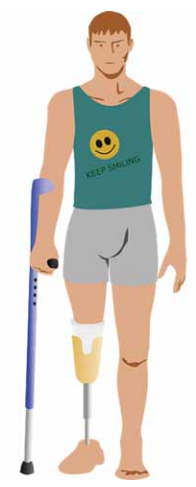
Chapter 2: Mobility Revolution-From Smart Wheelchairs to Rescue Drones
The Problem: Inaccessible Evacuation Routes
Over 80% of India’s cyclone shelters lack ramps (NIDM, 2022). For wheelchair users like Aruna Reddy, a Hyderabad resident, this meant being carried down stairs during Cyclone Michaung—a dehumanizing and risky process.
The Solutions
1. TerraWheel: The All-Terrain Lifeline
Bengaluru-based startup Bioniks designed TerraWheel, a GPS-enabled wheelchair with puncture-proof tires and obstacle-detection sensors. During Assam’s 2023 floods, it allowed 200+ users to self-evacuate through waterlogged streets. Its built-in SOS button alerts responders to the user’s location.
2. ExoBoots: Walking Through Crisis
Lightweight exoskeletons, tested in Odisha’s cyclone shelters, empower individuals with spinal injuries to stand and walk. During a 2024 drill in Puri, 45 users evacuated independently, climbing stairs to reach rooftop helipads.
3. AeroVe Drones: Eyes in the Sky
Chennai-based AeroVe deploys drones with thermal cameras to locate stranded PwDs. In 2023, they airlifted medicines to 47 bedridden seniors trapped in flooded homes. Their newer GuideDrone model uses loudspeakers and LED screens to relay real-time sign language instructions.
Chapter 3: Apps That Empower-Digital Tools for Every Need
SAMBHAV: India’s First Inclusive Disaster App Developed by the National Institute of Disaster Management (NIDM), SAMBHAV offers:
• Custom Alerts: Users choose formats—text-to-speech, sign language videos, or braille-ready PDFs.
• Smart Navigation: GPS maps highlight wheelchair-friendly routes, avoiding flooded underpasses or debris.
• Crowdsourced Help: A “Volunteer Nearby” feature connects users with trained helpers.
MindAid: Healing Invisible Wounds
Post-disaster trauma hits PwDs hardest. NIMHANS’ MindAid app provides 24/7 counseling via chatbots and video calls with psychologists trained in disability-specific care. After the 2023 Uttarakhand landslides, it supported 890 users with PTSD.
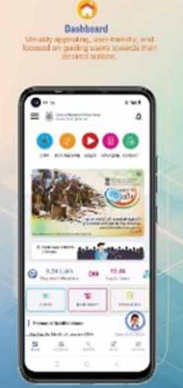
Chapter 4: AI and Big Data-Predicting Risks, Personalizing Rescue
RiskBot: Forecasting Danger Zones
A collaboration between ISRO and NDMA, RiskBot uses AI to analyze satellite data, weather patterns, and disability registries. In Uttarakhand, it predicted landslide-prone villages, enabling pre-emptive evacuations of 1,200 PwDs in 2023.
LifeBand: Vital Signs That Speak
This wearable device monitors heart rate, body temperature, and movement. If a user is trapped or unconscious, it alerts emergency services. During a Delhi building collapse, LifeBand helped rescuers locate 11 buried individuals.
IncluTech: Bridging Communication Gaps
Kochi-based startup IncluTech’s AI sign language interpreter integrates with disaster hotlines. During Kerala’s 2023 floods, it reduced miscommunication between deaf survivors and responders by 90%.
Chapter 5: Grassroots Tech-Innovation Beyond Cities
SMS Alerts for the Analog World
In Bihar, where smartphone penetration is low, NGOs send coded SMS alerts (e.g., “FLOOD1” = evacuate now) paired with village loudspeaker announcements.
Solar Radios: Powering Inclusion
Distributed in Odisha’s tribal zones, these radios broadcast alerts in Santhali and Ho languages. Simple audio formats assist those with cognitive disabilities.
Chapter 6: Challenges-The Roadblocks to Tech Equity
1. The Digital Divide: Only 34% of rural PwDs own smartphones (NCPEDP, 2023). Many lack electricity to charge devices during week-long disasters.
2. Cost Barriers: TerraWheel costs ₹85,000—unaffordable for most. Exoskeletons (₹5 lakh+) remain a distant dream.
3. Tech Illiteracy: Elderly PwDs struggle with apps. “My father couldn’t use SAMBHAV—it needs voice commands for non-readers,” says Chennai caregiver Kavita Rao.
4. Privacy Fears: GPS tracking risks misuse. Activists demand strict data laws for disability apps.

Chapter 7: The Future-Scaling Up, Leaving No One Behind
1. Google’s Sign Language Integration: By 2025, Google Alerts will include sign language videos, developed in partnership with NDMA.
2. Startup Incubators: The Accessible India Challenge funds affordable tech, like ₹10,000 vibrating alert belts for rural deaf communities.
3. Policy Shifts: The 2024 National Disaster Management Plan reserves 10% of tech funds for disability R&D.
4. Global Collaborations: India and Japan are co-developing AI earthquake alerts inspired by Japan’s Yurekuru Call system.
Conclusion: Beyond Gadgets—A Call for Systemic Change Technology is not a panacea. A smart app cannot retrofit a crumbling shelter, nor can a drone erase the stigma that keeps disabled women from seeking help. Yet, as Cyclone Biparjoy proved, innovation is a lifeline-one that must be woven into policy, budgets, and community training. The goal? A world where a tribal grandmother in Odisha and a wheelchair user in Mumbai share equal access to safety. As climate disasters intensify, India’s tech revolution must answer a moral question: Will we build tools for the many, or the privileged few? The answer will define our humanity.


